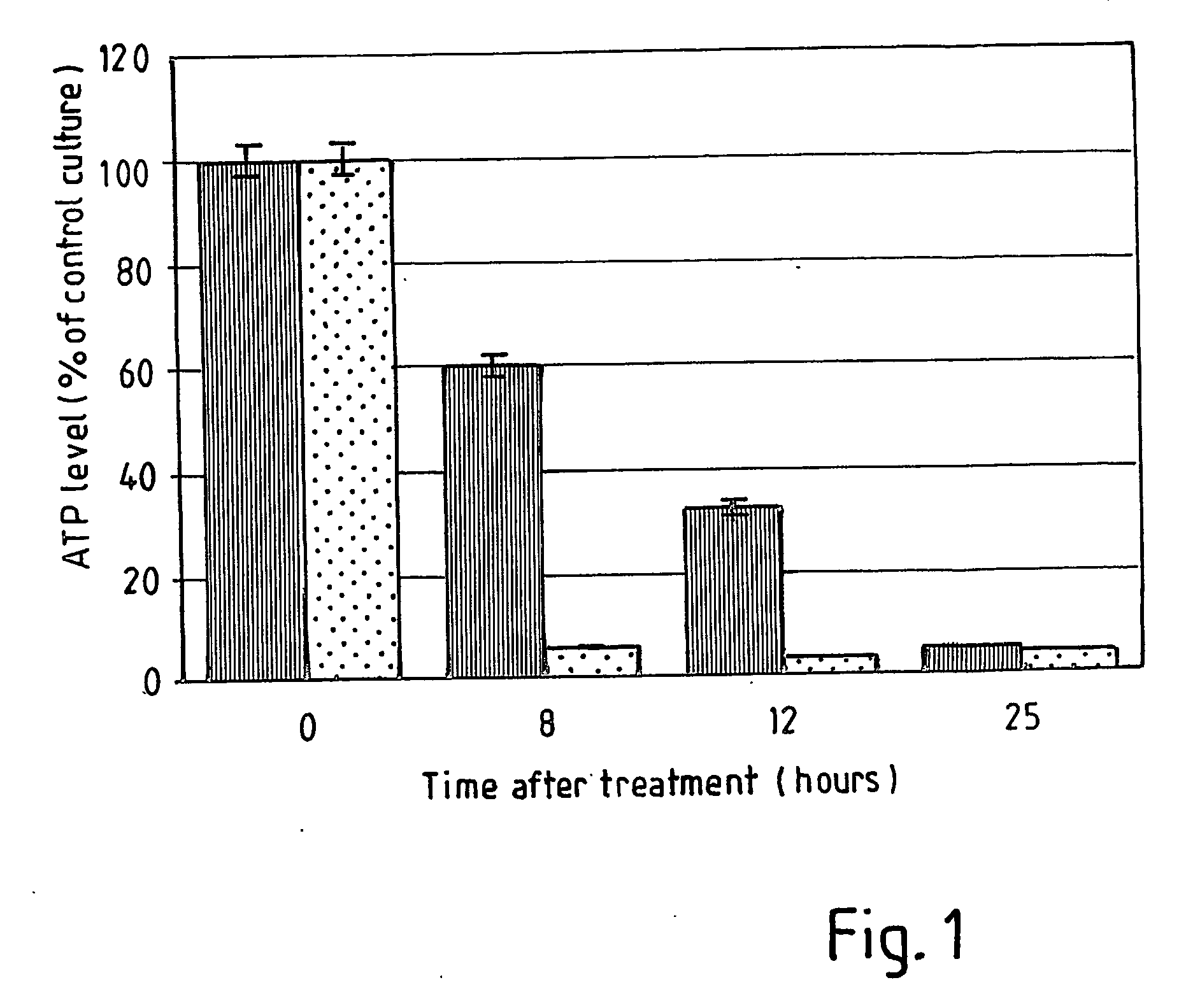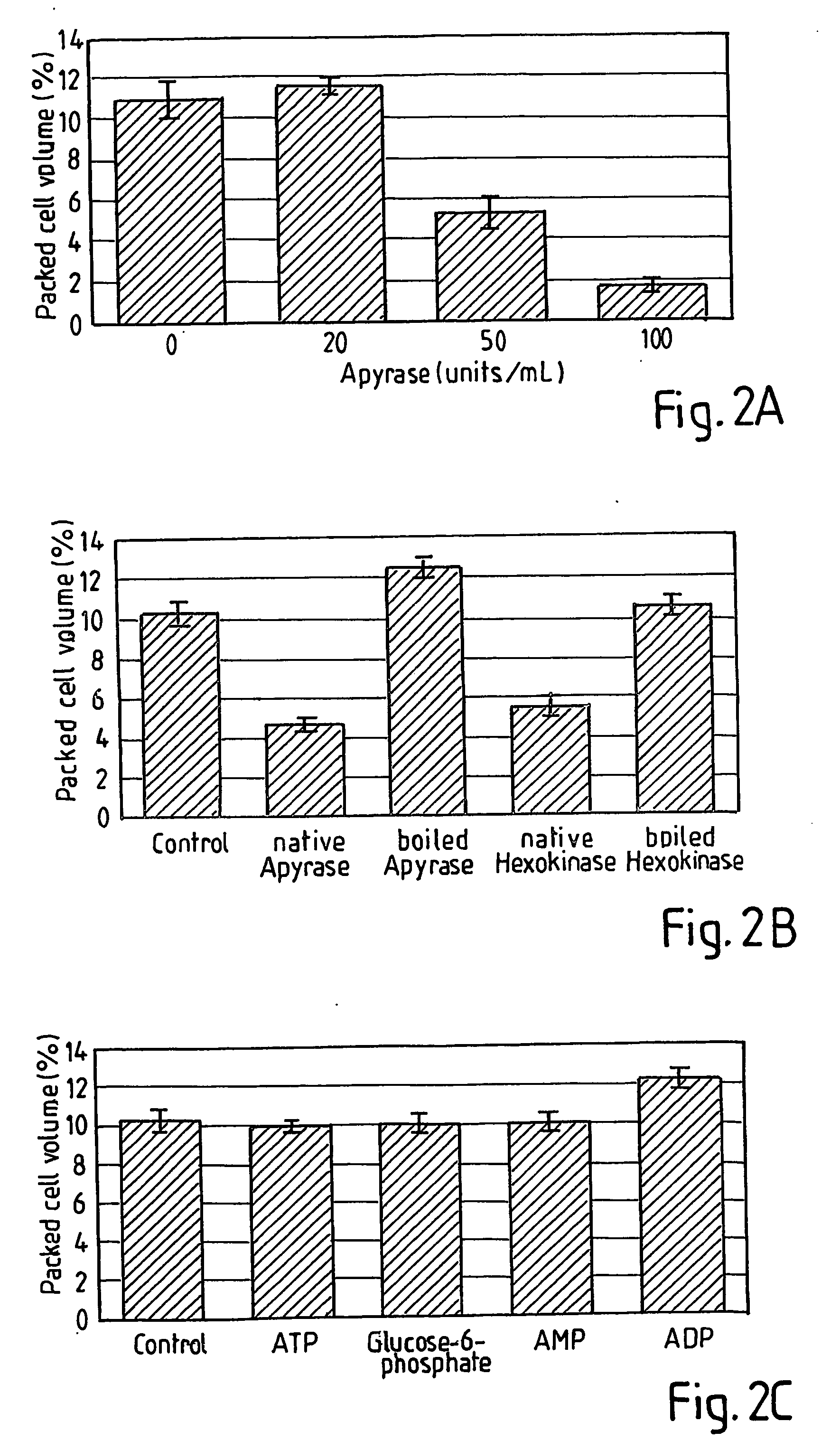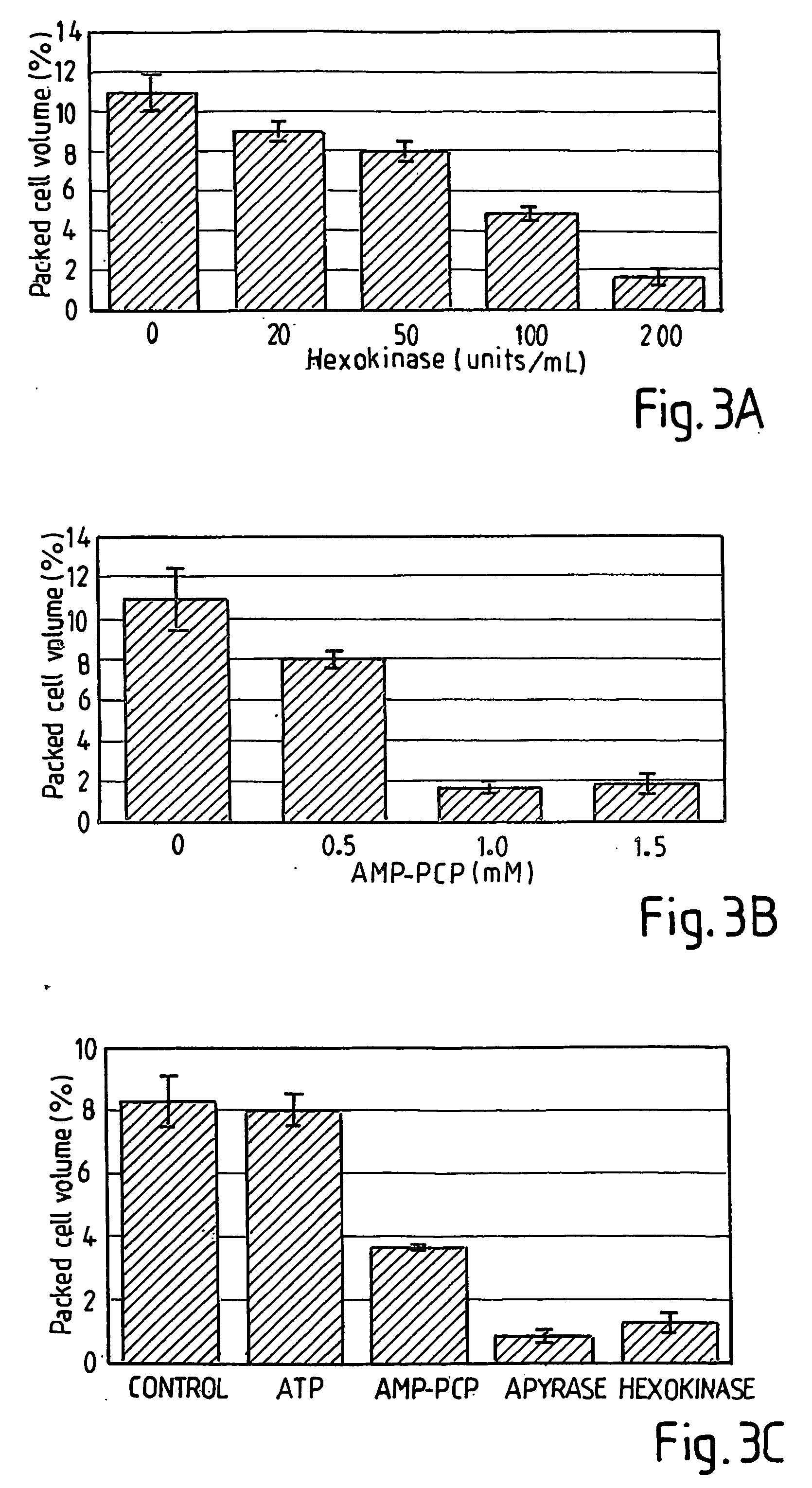Viability
a technology of viability and composition, applied in the field of viability, can solve the problems of reducing the resistance of plants to xenobiotics, and achieve the effect of preventing its uptake or use, and facilitating the rate of enzymatic catalysis
- Summary
- Abstract
- Description
- Claims
- Application Information
AI Technical Summary
Benefits of technology
Problems solved by technology
Method used
Image
Examples
example 1
Treatment of Arabidopsis thaliana Cell Suspension Cultures with Apyrase or Hexokinase / Glucose Removes Extracellular ATP
[0064] A suspension of Arabidopsis thaliana cells was grown in MS medium Murashige & Skoog, 1962 Physiol. Plant. 15, 473497) with minimal vitamins and containing 3% (w / v) sucrose, 0.5 mg / L kinetin, and 0.5 mg / L 1-naphthalene acetic acid, and adjusted to pH 5.7 with NaOH / HCl. All the medium components were purchased from Sigma Chemical Company (Poole, UK). The culture was propagated by weekly sub-culturing of 7 day old inoculum into fresh medium (10-fold dilution) and incubating on a rotary platform (125 r.p.m) at 25° C. in complete darkness. Such cells are viable for many days after transferring to fresh growth medium. Cells were normally grown as 100 mL cultures in 250 mL glass Erlenmeyer flasks, but all treatments were performed on 1.5 mL or 10 m / L aliquots in sterile plastic vials of 3.5 cm diameter (Bibby Sterilin Ltd., Stone, UK). Cell cultures were used for t...
example 2
Removal of External ATP by Treatment of A. thaliana Cell Suspension Cultures with Apyrase Results in Cell Death
[0067]A. thaliana cell cultures were grown as described in example 1. Aliquots of the cell suspension (1.5 mL) were treated with a final concentration of 0, 20, 50, or 100 units / mL of apyrase. The cultures were incubated for 3 days and the apyrase-treated cultures showed a significant frequency of cell death. The dead cells had become buoyant and adhered to the walls of the vials, forming a ring just above the edge of the swirling medium. The ring of cells was sometimes dislodged and fell into the medium, resulting in apyrase-treated cultures having flakes of dead cells at the bottom of the vials.
[0068] The inventors decided to use viability staining to confirm cell death in these cell cultures. To achieve this, 200 L aliquots were removed from the cultures and the cells resuspended in 0.2M CaCl2 after removal of the growth medium. The aliquots were doubly-stained by incu...
example 3
Removal of External ATP by Treatment of A. thaliana Cell Suspension Cultures with Hexokinase and Glucose Results in Cell Death
[0072]Arabidopsis cell cultures were grown and treated as described in example 2 and the glucose plus hexokinase treatment was used as the extracellular ATP removal system. The cultures were treated with a combination of 100 mM glucose and 0, 20, 50, 100, or 200 units / mL hexokinase. The results are shown in FIG. 3A. As apparent from the Figure, cell viability was progressively lost with increasing hexokinase concentration and 200 units / mL hexokinase and 100 mM glucose treatment was attended by an over 80% loss of viability. Although glucose can freely diffuse into cells, hexokinase is cell-impermeative and remains in the external medium, and its addition to cell cultures results in a targeted removal of extracellular ATP. Hexokinase that had been denatured by boiling for 5 minutes before addition to cell cultures did not cause cell death (FIG. 2B), demonstra...
PUM
| Property | Measurement | Unit |
|---|---|---|
| pH | aaaaa | aaaaa |
| diameter | aaaaa | aaaaa |
| pH | aaaaa | aaaaa |
Abstract
Description
Claims
Application Information
 Login to View More
Login to View More - R&D
- Intellectual Property
- Life Sciences
- Materials
- Tech Scout
- Unparalleled Data Quality
- Higher Quality Content
- 60% Fewer Hallucinations
Browse by: Latest US Patents, China's latest patents, Technical Efficacy Thesaurus, Application Domain, Technology Topic, Popular Technical Reports.
© 2025 PatSnap. All rights reserved.Legal|Privacy policy|Modern Slavery Act Transparency Statement|Sitemap|About US| Contact US: help@patsnap.com



